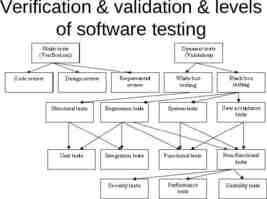Hepatitis C Virus Screening, Testing, and Diagnosis in
14 Slides384.93 KB
Hepatitis C Virus Screening, Testing, and Diagnosis in Adults www.hivguidelines.org OCTOBER 2022 NYSDOH AIDS Institute Clinical Guidelines Program
Purpose of This Guideline Increase compliance with the 2014 New York State public health law that requires that an HCV screening test be offered to every individual born between 1945 and 1965 who receives healthcare services from a physician, physician assistant, or nurse practitioner in a primary care or inpatient hospital setting. Promote universal HCV testing in adults ( 18 years old). Promote HCV testing in patients who are planning to get pregnant or are currently pregnant, for each pregnancy. Increase the number of people in New York State with chronic HCV who are diagnosed and referred for HCV treatment. Provide evidence-based clinical recommendations to support the goals of the New York State Hepatitis C Elimination Plan (NY Cures HepC). OCTOBER 2022 NYSDOH AIDS Institute Clinical Guidelines Program www.hivguidelines.org
New York State Laws Clinicians must offer an HCV screening test to every individual born between 1945 and 1965. If an individual accepts the offer and the test is reactive, the clinician must offer the individual follow-up healthcare (including an HCV RNA test) or refer the individual to a healthcare provider who can provide follow-up healthcare. Clinicians must report all suspected or confirmed cases of HCV infection, specifying acute or chronic, to the local health department of the area where the individual resides, in full compliance with New York State laws and regulations. See NYSDOH Communicable Disease Reporting. OCTOBER 2022 NYSDOH AIDS Institute Clinical Guidelines Program www.hivguidelines.org
Newly Diagnosed Cases of HCV in NYS & NYC New York State* 154,804 cases reported from 2001 to 2020 2020 cases: 4,126 reported 27% (1,105) of cases reported from the 1945 to 1965 birth cohort, with 70% male and 30% female 26% (1,078) of cases reported age 30 years, with 58% in males and 42% in females New York City 174,399 cases reported from 2001 to 2020 2020 cases: 2,995 reported 32% (906) of cases reported from the 1945 to 1965 birth cohort, with 556 (62%) in males and 337 (37%) in females (3 unknown) 13% (386) of cases reported age 30 years, with 229 (59%) in males, 150 (39%) in females, 2 ( 1%) in transgender individuals, and 5 (1%) unknown *Excluding New York City. OCTOBER 2022 NYSDOH AIDS Institute Clinical Guidelines Program www.hivguidelines.org
Recommendations: Routine Testing Clinicians should perform HCV screening at least once for all patients 18 years old who are not known to have HCV infection. (A2) Clinicians should repeat HCV screening in all patients who are planning to get pregnant (A2) or are currently pregnant (B3), and screening should be repeated with each pregnancy. (B3) See the NYSDOH AI guideline Treatment of Chronic Hepatitis C Virus Infection in Adults HCV Testing and Management in Pregnant Adults and the NYSDOH Dear Colleague Letter (11/1/2021): HCV Testing in Pregnant Persons. Clinicians should perform repeat HCV testing based on individual exposure to the following risk factors, at least once if risk exposure is episodic and annually if ongoing: Injection (A1) or intranasal (A2) drug use Hemodialysis (A1) HIV infection diagnosis (A1) Sex partner(s) with HCV infection (A2) Tattoo, piercing, or acupuncture obtained in a nonsterile setting (A2) Incarceration (A2) Unexplained liver disease or abnormal transaminase levels (A1) OCTOBER 2022 NYSDOH AIDS Institute Clinical Guidelines Program www.hivguidelines.org
Recommendations: Routine Testing, continued Clinicians should recommend repeat HCV testing at least annually to MSM and others who are not known to have HCV infection and: Engage in receptive anal sex and other behaviors that may tear mucous membranes (A2) Have multiple sex partners (A2) Are taking PrEP to prevent HIV acquisition (A3) Are transgender women (B3) Engage in sex while using recreational mind-altering substances, particularly methamphetamine (A2) Have been diagnosed with another STI within the previous 12 months (A2) Potential Exposure to HCV in an Occupational Setting: See the NYSDOH AI guideline PEP to Prevent HIV Infection Management of Potential Exposure to Hepatitis C Virus. OCTOBER 2022 NYSDOH AIDS Institute Clinical Guidelines Program www.hivguidelines.org
Recommendations: HCV Antibody & RNA Testing Clinicians should perform HCV screening using either a laboratorybased HCV antibody test or a point-of-care rapid antibody test. (A1) If the HCV antibody test result is positive, clinicians should perform an HCV RNA test. (A1) Some laboratories perform reflex testing and automatically test for HCV RNA after a positive HCV antibody result. If the HCV antibody test result is negative and acute HCV infection is suspected, clinicians should perform an HCV RNA test. (A1) In patients with a history of a positive HCV antibody test result, clinicians should perform an HCV RNA test (not an HCV antibody test) for screening. (A1) OCTOBER 2022 NYSDOH AIDS Institute Clinical Guidelines Program www.hivguidelines.org
Key Points: HCV RNA Testing The presence of HCV antibodies alone may not indicate active HCV infection. In patients with a history of a reactive HCV antibody test result, subsequent screening requires an HCV RNA test, not an HCV antibody test, to detect infection. HCV antibodies do not prevent future HCV infections; prevention measures are needed for individuals with ongoing risk factors. OCTOBER 2022 NYSDOH AIDS Institute Clinical Guidelines Program www.hivguidelines.org
Interpretation of HCV Test Results Anti-HCV Positive Positive Negative Negative OCTOBER 2022 HCV RNA Interpretation Detected Acute or chronic HCV infection Not detected Resolution of HCV by spontaneous or treatment-related clearance, or HCV infection during period of intermittent viremia, or False-positive antibody screening result Detected Early acute HCV infection, or Chronic HCV infection in immunosuppressed patients Unknown Presumed absence of HCV infection if the HCV RNA testing was not performed or the status is unknown Response Evaluate for treatment. Perform HCV RNA testing based on risk factors. Repeat HCV RNA testing if acute exposure is known or suspected. Evaluate for treatment if patient has risk factors. Repeat testing if patient has no risk factors or exposure and a falsepositive result is suspected. Perform HCV antibody testing based on risk factors. NYSDOH AIDS Institute Clinical Guidelines Program www.hivguidelines.org
Recommendation: Testing After Known HCV Exposure After a known HCV exposure, which generally occurs in an occupational setting, clinicians should perform a baseline HCV antibody test, and if positive, an HCV RNA test and liver function tests, including a liver enzyme test. (A2) See NYSDOH AI guideline PEP to Prevent HIV Infection Management of Potential Exposure to Hepatitis C Virus . OCTOBER 2022 NYSDOH AIDS Institute Clinical Guidelines Program www.hivguidelines.org
Recommendations: Acute & Chronic HCV Clinicians should suspect acute HCV infection if a patient has detectable HCV RNA in the absence of a positive antibody test or a documented negative HCV antibody test result within the previous 6 months and a newly positive HCV antibody test result. (A3) Clinicians should perform laboratory screening for HIV, HAV, and HBV infections in all patients with possible acute HCV infection, given the similar risk factors for acquisition. (A3) Clinicians should repeat HCV antibody and RNA tests 24 weeks after exposure to assess for spontaneous HCV clearance or chronic HCV infection; earlier testing may be indicated for patients at increased risk of transmitting HCV to others. (A3) If HCV RNA is detected after a positive HCV antibody test result, the patient has confirmed chronic HCV infection and clinicians should evaluate for treatment. (A2) See the NYSDOH AI guideline Pretreatment Assessment in Adults With Chronic Hepatitis C Virus Infection. OCTOBER 2022 NYSDOH AIDS Institute Clinical Guidelines Program www.hivguidelines.org
Key Points: Acute HCV Infection The timing of HCV treatment is determined with respect to the likelihood of spontaneous clearance and patient or care provider concerns regarding risk of transmission. Patient education should include the following information: If patients have acute HCV infection, they may be infectious and should take precautions to avoid transmitting HCV to others. HCV infection may clear spontaneously (i.e., without treatment). Treatment options are available if HCV infection is established. OCTOBER 2022 NYSDOH AIDS Institute Clinical Guidelines Program www.hivguidelines.org
Need Help? NYSDOH AIDS Institute Clinical Guidelines Program www.hivguidelines.org
Access the Guideline www.hivguidelines.org Hepatitis C Virus Screening, Testing, and Diagnosis in Adults Also available: Printable pocket guide and PDF NYSDOH AIDS Institute Clinical Guidelines Program www.hivguidelines.org



















